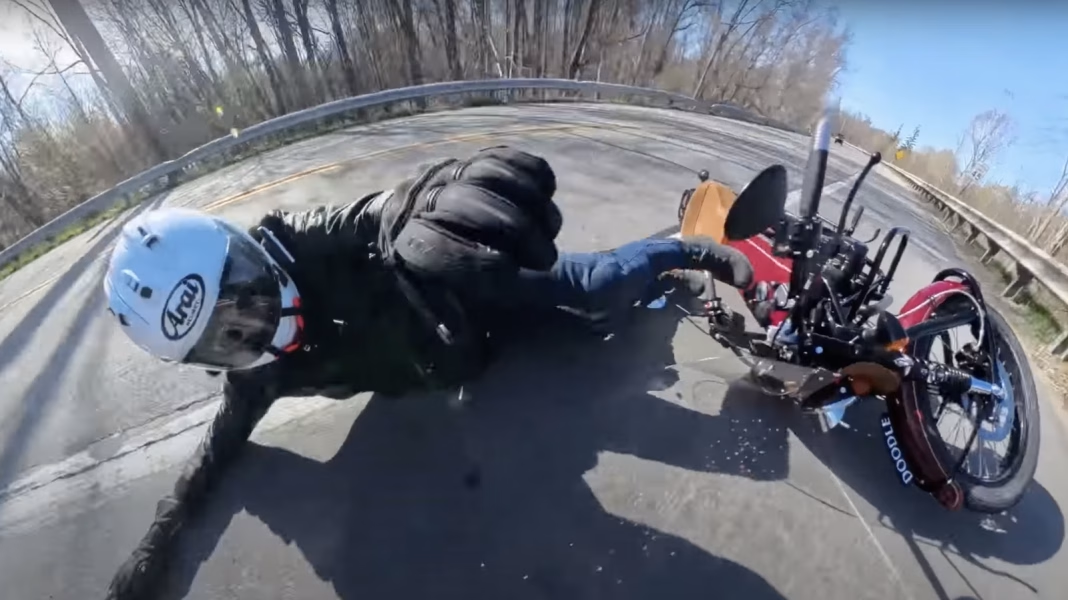What Really Happens When a Motorcyclist Crashes for the First Time?
If you ride, you’ve probably heard the saying: there are two kinds of motorcyclists—those who have crashed, and those who haven’t yet. It’s a phrase that’s equal parts warning and rite of passage. For YouTuber Doodle on a Motorcycle, that moment came recently, and she captured every second on camera. Her experience is a wake-up call for anyone who thinks they’re immune to the unexpected.
Why Do Even Experienced Riders Go Down?
Let’s be honest—no amount of skill or confidence can guarantee you’ll never hit the pavement. Road conditions change in a blink. A patch of gravel, an inattentive driver, or a sudden downpour can turn a routine ride into a split-second disaster. According to the National Highway Traffic Safety Administration, nearly 80% of reported motorcycle crashes result in injury or death, compared to just 20% for cars. That’s not meant to scare you off the bike, but it’s a reminder: the risks are real, and even seasoned riders aren’t invincible.
What Can We Learn from Doodle’s Crash Footage?
Watching Doodle’s crash video is a gut check. She’s not speeding, not showing off—just riding like any of us might on a weekend. Yet, in an instant, she’s sliding across the asphalt. The lesson? Crashes don’t always happen because of reckless behavior. Sometimes, it’s just bad luck or a minor miscalculation. The real takeaway is how she handled it—her gear did its job, and she was able to walk away with only minor injuries. That’s no accident. It’s preparation.
Is Motorcycle Gear Really That Important?
Here’s where the rubber meets the road—literally. Doodle was wearing a full-face helmet, armored jacket, gloves, and proper boots. The result? She avoided the kind of injuries that send riders to the ER or worse. According to a 2022 study published in Injury Prevention, wearing a helmet reduces the risk of head injury by 69% and the risk of death by 42%. And it’s not just helmets—armored jackets and pants can mean the difference between a few bruises and months of skin grafts. Think of gear as your insurance policy. You hope you’ll never need it, but when you do, you’ll be grateful it’s there.
How Do Riders Bounce Back Mentally After a Crash?
The physical scrapes are one thing, but the mental scars can linger. Doodle talks openly about the fear and self-doubt that crept in after her crash. That’s normal. A 2021 survey by the Motorcycle Safety Foundation found that nearly half of riders who’ve crashed experience anxiety about getting back on the bike. The trick is to take it slow. Talk to other riders, maybe even take a refresher safety course. The goal isn’t to erase the fear, but to ride with a new respect for the risks—and for your own resilience.
What Can You Do Today to Ride Safer?
Start with the basics. Check your gear—does your helmet fit snugly? Are your gloves and jacket up to the task? Next, brush up on your skills. Even a quick parking lot practice session can sharpen your reflexes. And don’t forget your mindset. Ride like you’re invisible to other drivers, because sometimes, you are. Defensive riding isn’t paranoia—it’s survival.
The big takeaway? Riding isn’t about perfection—it’s about smarter adjustments. Start with one change this week, and you’ll likely spot the difference by month’s end.


